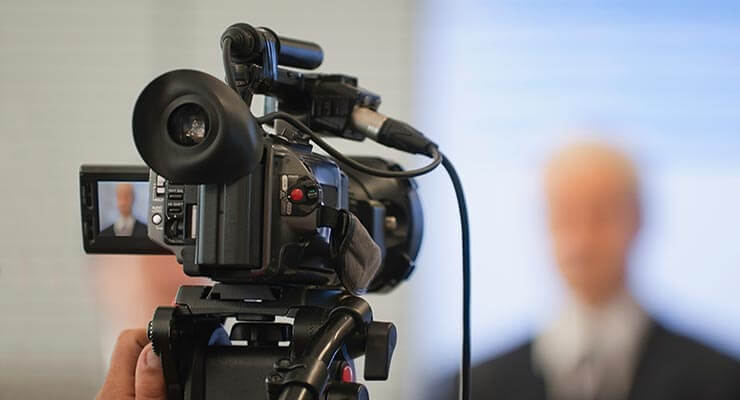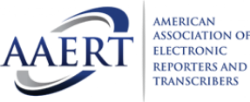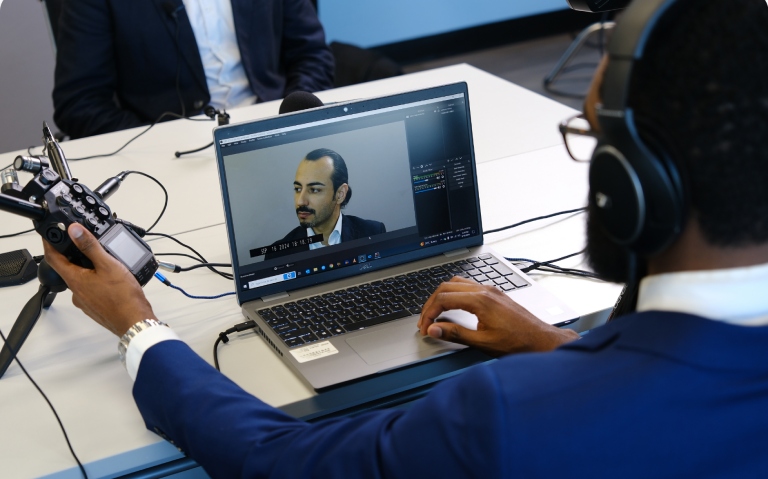Legal Videography: Why It’s a Necessary for Complex Legal Cases
Legal Videography: Why It’s a Necessary for Complex Legal Cases
Blog Article
Why Legal Videography Is Crucial for Accurate Court Recordings
The role of legal videography in court room settings can not be overstated, as it functions as a necessary device for preserving the honesty of court records. By catching both spoken and non-verbal communication, it enhances the quality of witness testaments and shows the nuances of court room communications. This detailed paperwork not only aids in minimizing potential misunderstandings yet also sustains appellate evaluations, thereby enhancing the judicial procedure. Nonetheless, the ramifications of integrating legal videography right into common court practices elevate crucial inquiries about its wider effect on the legal system. What might these ramifications involve?
Relevance of Visual Evidence
In the realm of lawful proceedings, the relevance of visual evidence can not be overstated. Aesthetic proof serves as a powerful device in establishing facts, corroborating statements, and enhancing the total quality of an instance. This sort of proof, that includes photos, video clips, and representations, can supply a substantial context that spoken summaries typically do not have, therefore offering courts and courts a clearer understanding of the conditions surrounding a situation.
Additionally, aesthetic proof aids in the retention of information. Human cognition is naturally visual, and people are most likely to keep in mind and understand information presented in an aesthetic style. In the court, this can be essential, as compelling aesthetic proof can persuade point of views and enhance the story presented by legal reps.
Additionally, using aesthetic evidence can reduce misconceptions and ambiguities that typically arise from verbal exchanges. By offering a direct representation of events, visual evidence aids to remove subjective interpretations and fosters a more unbiased evaluation of the facts. The assimilation of aesthetic evidence right into lawful proceedings not only enhances the honesty of the judicial procedure but also improves the probability of achieving a simply end result.
Recording Non-Verbal Cues
Utilizing sophisticated videography strategies can significantly enhance the capture of non-verbal cues throughout legal procedures. Non-verbal communication, consisting of facial expressions, body movement, and eye contact, plays an essential function in sharing emotions and intentions that might not be explicitly stated in verbal testament. legal videography. Lawful videography employs high-def electronic cameras and calculated angles to make sure that these refined signs are videotaped with clearness and accuracy
The capacity to assess non-verbal actions can provide important context to declarations made during court sessions. A witness's unwillingness or self-confidence can be analyzed with their posture or gestures, potentially influencing the court's assumption of integrity. The use of close-up shots can help concentrate on a speaker's expressions, enabling for an extra nuanced understanding of the statement.
Furthermore, integrating several electronic camera angles can create a comprehensive sight of interactions, highlighting characteristics in between celebrations included. This diverse strategy not just improves the precision of the court document however also aids in protecting the honesty of the judicial process - legal videography. Eventually, recording non-verbal cues with legal videography cultivates a richer, a lot more complete depiction of court room procedures

Enhancing Testimony Dependability
The integrity of testimony can be significantly reinforced via using high-grade lawful videography. Video clip recordings work as an objective tool that records not only the spoken words of witnesses however likewise the subtleties of their distribution, including tone, pacing, and click site emotional expressiveness. This diverse documents supplies a clearer understanding of the witness's trustworthiness and intentions, which can be crucial in legal procedures.
Furthermore, legal videography minimizes the potential for misinterpretations that might arise from created records alone. When jurors can observe a witness's behavior and body movement along with their testimony, they are better equipped to analyze the credibility and integrity of the proof presented. This aesthetic context can reinforce the testimonial story, making it extra compelling and trustworthy.
In addition, the presence of a video recording can prevent potential inconsistencies in testament. Witnesses might be a lot more careful in their statements when they understand they are being taped, leading to more exact and genuine accounts. In general, premium lawful videography improves the integrity of testimony, making sure that the court has accessibility to a total and honest representation of the facts as shared by the witnesses.
Sustaining Appeals and Reviews
Legal videography plays an important function in sustaining appeals and reviews by providing a detailed visual document of court room proceedings. This aesthetic documentation captures not only the talked words of witnesses and lawyers but likewise the subtleties of body language, tone of voice, and court room characteristics. Such aspects can be crucial in recognizing the context of testimonies and arguments presented.
In the appellate process, where the emphasis is on mistakes of law and procedural justness, a video document can offer as an important tool for appellate courts. It allows judges to review the original test context, making certain that decisions are based upon a total understanding of the process. The ability to visually analyze the disposition of witnesses or the communications between parties can expose insights that created records may neglect.

Furthermore, legal videography can help in making clear obscurities in testaments or step-by-step rulings, thus reinforcing the original source the basis for an allure. By offering a reliable, objective account of what taken place in court, legal videography not only sustains the stability of the legal process but also encourages all parties included to make enlightened choices concerning their situations.
Improving Court Processes
Enhancing courtroom performance, legal videography enhances procedures by supplying instant accessibility to aesthetic documents of proceedings. This modern technology enables judges, lawyers, and courts to revisit vital testament and proof, guaranteeing that all events have a clear understanding of the case. By capturing the nuances of verbal and non-verbal interaction, videography improves the record, making it less complicated to realize the context and weight of statements.

Additionally, video clip recordings can facilitate remote participation in hearings, enabling higher adaptability in find out here organizing and participation, which is specifically valuable in complex instances involving multiple stakeholders.
Verdict
To conclude, lawful videography plays a vital duty in making certain precise court recordings by giving essential aesthetic proof that captures both spoken and non-verbal interaction. This technique improves the integrity of statements, sustains appellate reviews, and improves courtroom processes. By fostering an extensive understanding of court room characteristics, legal videography ultimately adds to extra fair judicial end results, reinforcing the honesty of the legal system and assisting in educated decision-making.
Report this page